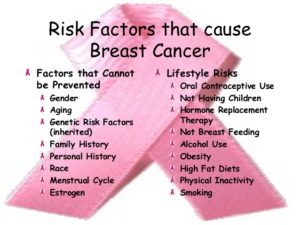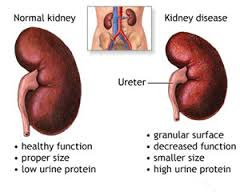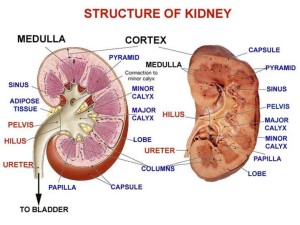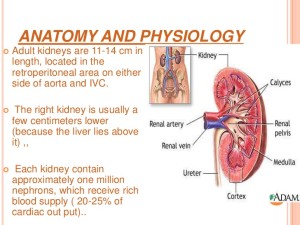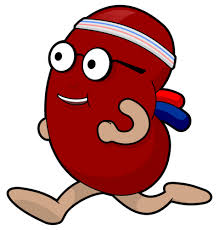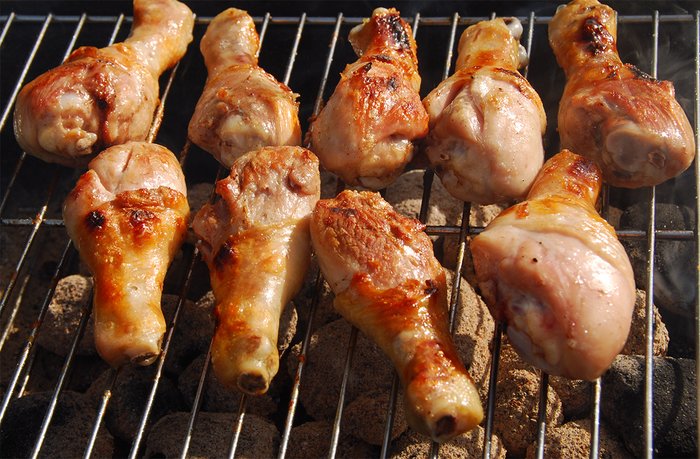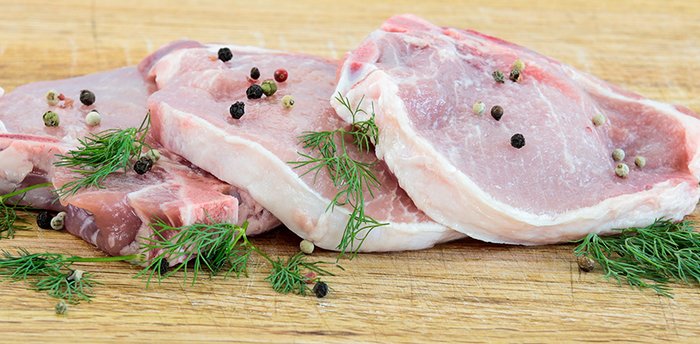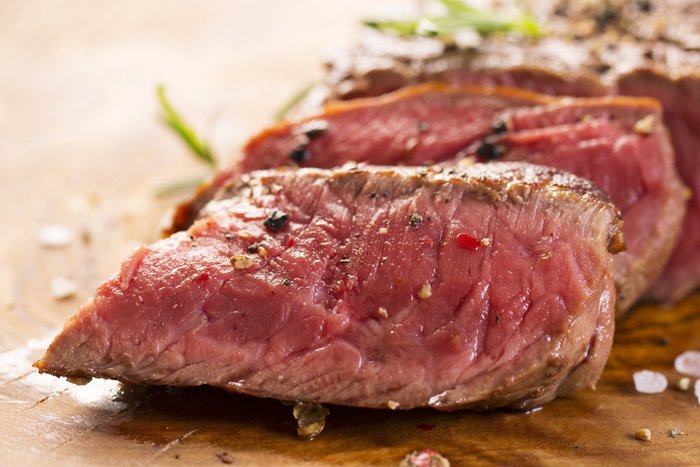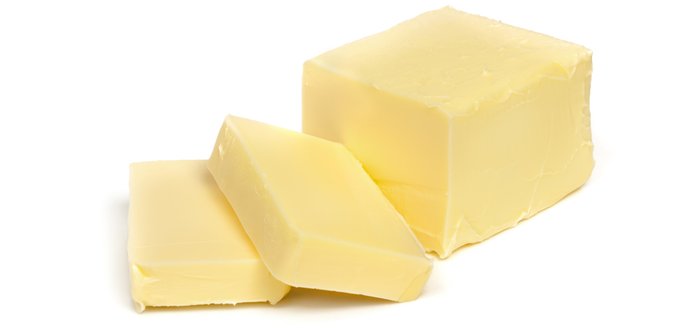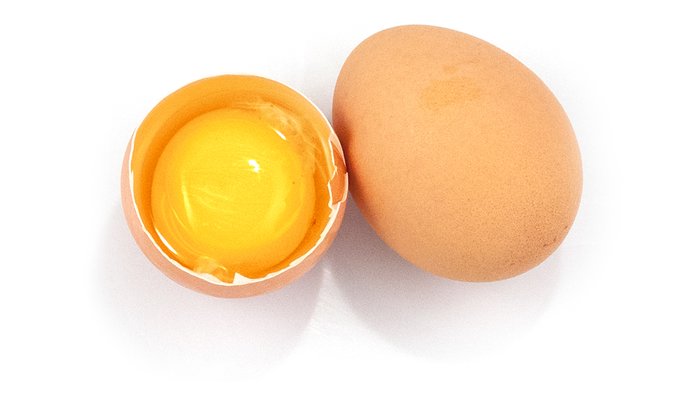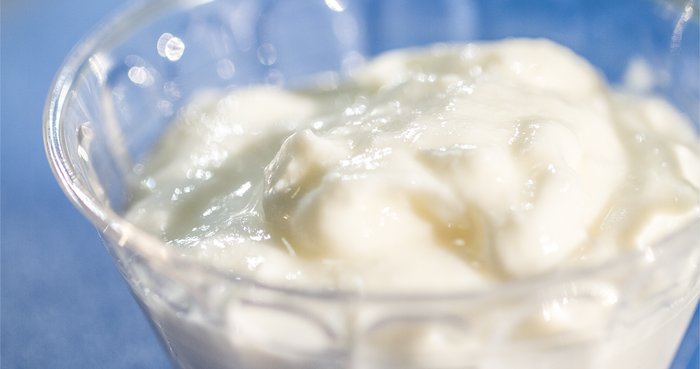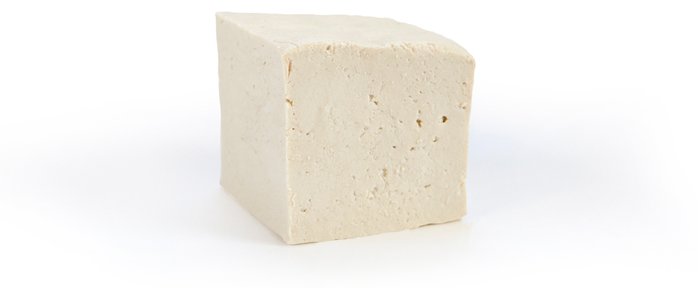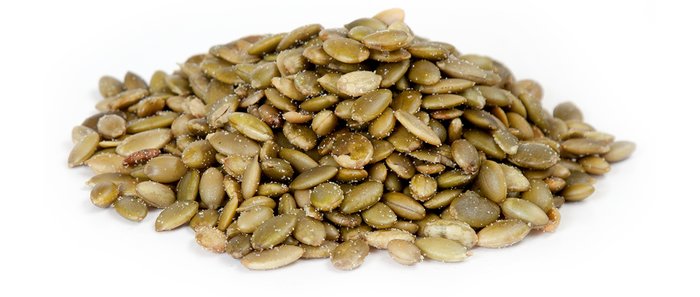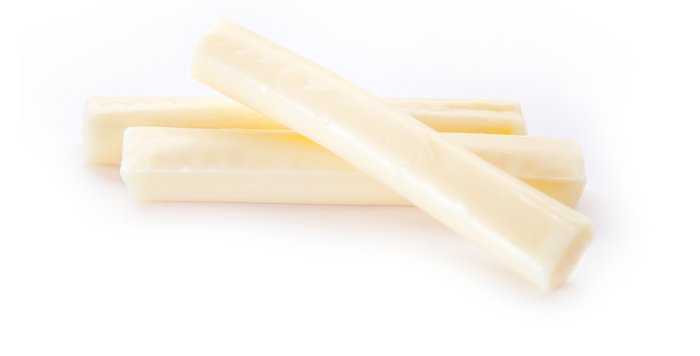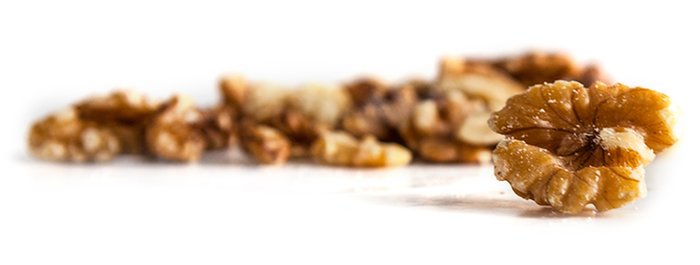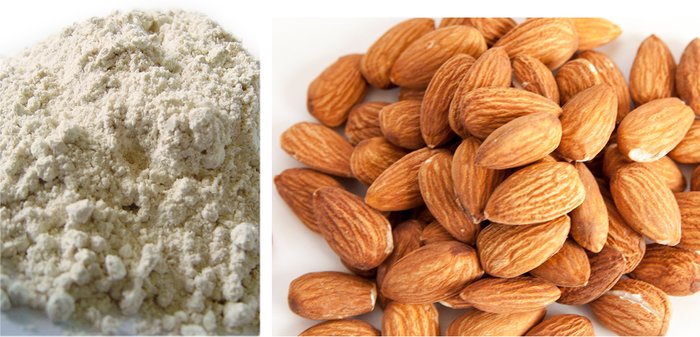Low-Carb Meats And Fish
12. Catfish
Carb count: 0 grams per 3 ounces
More flavorful than tilapia, farmed catfish is an inexpensive way to load up your muscles with pure, high-quality protein. American-farmed catfish is also considered a sustainable option from the fish counter. Fillets are great steamed, grilled, oven-roasted, or pan-seared. This swimmer is a good source of vitamin B-12, which your nervous system needs in order to function properly.
13. Canned Pink Salmon
Carb count: 0 grams per 1/2 can
Branch out from tuna and try this healthy canned fish option. Pink salmon is affordable and tends to be lower in mercury than tuna. Canned salmon is also a good way to reel in plenty of the omega-3 fats that have been shown to reduce exercise-induced muscle soreness and stimulate muscle protein synthesis.[5]
14. Chicken Drumsticks
Carb count: 0 grams per 3 ounces
While go-to chicken breasts can be as exciting as C-SPAN, budget-friendly drumsticks have richer flavor and their juicy meat is less prone to drying out during cooking. Beyond being a protein payload (24 grams in each 3-ounce serving), drumsticks supply selenium, an antioxidant that may help ease exercise-induced oxidative stress.[6]
15. Ground Turkey
Carb count: 0 grams per 3 ounces
Inexpensive ground turkey is an easy way to infuse your meals with carb-free protein. Use it for burgers and meat sauces, or brown it in a pan and stir in low-carb vegetables. To trim fat calories, look for packages made with ground white meat.
Nutrition Bonus: As with other poultry, turkey contains a full arsenal of the essential amino acids that can pump up your muscles.
16. Pork Tenderloin
Carb count: 0 grams per 3 ounces
When not overcooked, the “other white meat” has good juicy flavor and a much less painful price tag than its beef counterpart. It also provides a stellar 6:1 protein-to-fat ratio. Look for unseasoned pork tenderloin to avoid excess salt and other questionable ingredients. On top of all the protein, pork tenderloin is a good source of thiamine (vitamin B-1), needed to make the energy you use to lift heavy stuff.
17. Top Sirloin Steak
Carb count: 0 grams per 3 ounces
This cut of beef is one of the leaner options at the supermarket, making it a smart way to get your fill of protein with zero carbohydrate cost. It takes particularly well to marinades, which serve to tenderize the meat further. Red meat like sirloin beef is a natural source of creatine, which can help you throw down at the gym. You can up the nutritional ante by splurging for steak sourced from grass-fed cattle.
18. Roast Beef
Carb count: 0 grams per 2 ounces
For the most part, deli-style roast beef is spared the sugars that can be added to turkey and other lunchmeats. Surprisingly, it’s also one of the leaner options at the deli counter. The highly absorbable form of iron in beef can help during those suffer fests in the squat rack.
19. Bison
Carb count: 0 grams per 3 ounces
When it comes to grilled steak or burgers, consider your options beyond beef. Game meats like bison and elk are becoming easier to find at the butcher counter, and research shows that when bison is raised on the range, its meat is richer in omega-3 fats than traditionally-raised cattle.[7]
Other Low-Carb Meats And Fish
- Cornish game hen
- Halibut
- Ground beef
- Turkey breast
- Chicken thighs
- Canned sardines
LOW-CARB DAIRY
20. Gruyere Cheese
Carb count: 0 grams per ounce
Forget the mundane mass-produced cheese slices—this hard cheese from Switzerland has a great nutty flavor that’ll win you over. It also melts beautifully, making it a perfect way to add excitement to everything from steamed broccoli to low-carb pizza. This cured cheese is a top-notch source of calcium, a mineral involved in bone-building.
21. Butter
Carb count: 0 grams per tablespoon
Since butter has been found to not actually be that bad for you, it has once again found a place in frying pans and home baking.[8] For a rich-tasting riff on mashed potatoes, try blending steamed cauliflower with butter, fresh thyme, and a couple pinches of salt.
22. Eggs
Carb count: 1 gram per 2 large eggs
Which came first, the chicken or the egg? Who cares, since both supply plenty of protein power with little to no carbs. Plus, Canadian scientists recently discovered that eggs are a surprisingly good source of antioxidants to help mop up those cell-damaging free radicals.[9]
23. Cottage Cheese
Carb count: 6 grams per cup
Old-school bodybuilders popularized cottage cheese for a reason: It’s jam-packed with slow-digesting casein protein (28 grams per cup), which slays hunger and builds muscle over a longer period than whey protein. Sodium levels can vary greatly, so compare brands carefully.
24. Plain Greek Yogurt
Carb count: 9 grams per cup
In recent years, Greek yogurt has gone from an obscure item in the dairy aisle to a cultured rock star, thanks to the 23 grams of muscle-boosting protein per cup. Of course, if you want to keep the carb count low, you’ll have to opt for plain versions that are not pumped full of sugar.
25. Goat Milk
Carb count: 11 grams per cup
This up-and-coming milk contains less carbs than cow’s milk, is easier to digest, and according to recent research is richer in a number of nutrients such as omega fatty acids and conjugated linoleic acid (CLA), a fatty acid that may help torch body fat.[10]
Other Low-Carb Dairy Products
- Brie cheese
- Goat cheese
- Monterey cheese
- Ricotta
- Plain kefir
- Sour cream
- Cream cheese
LOW-CARB PLANT PROTEINS
26. Tofu
Carb count: 3 grams per 3 ounces
Tofu isn’t only for vegetarians! It also offers an inexpensive low-carb protein option for carnivores who want a night off from meat. When you add tofu to sauces or other foods, it soaks up flavors brilliantly. Try it as a cheap protein in stir-fry, or marinate it like you would steak and slap it on the grill.
27. Tempeh
Carb count: 9 grams per 3 ounces
Tempeh is a meaty patty that’s made from a base of fermented soybeans, making it a respectable protein source. As a fermented product like yogurt or sauerkraut, it’s believed that tempeh contains a healthy population of ultra-healthy probiotics. Its flavor can be described as smoky, nutty, and earthy in a mushroomy kind of way. Try crumbling it up and adding it to chili, stir-fry, tacos, soups, casseroles, and pasta sauce.
28. Canned Pinto Beans
Carb count: 18 grams per 1/2 cup
Among canned beans, pinto beans contain some of the lowest carbohydrate numbers, but still boast significant amounts of plant-based protein—12 grams in each serving. You can use them to add a quick protein hit to salads and scrambled eggs. Their wallop of fiber can help reduce a spike in blood sugar caused by carbohydrates in a meal.
29. Pumpkin Seeds (Pepitas)
Carb count: 5 grams per ounce
This seed boasts 7 grams of protein and a whole lot of crunch in each serving. The carbs here are all slow-digesting, so they’ll give you sustained energy. Seeds from other gourds, like acorn squash, have similar properties. Toss them in oil and toast in the oven.
Other Low-Carb Plant Proteins
- Hemp seeds
- Edamame
- Unsweetened soy milk
LOW-CARB SNACKS
30. String Cheese
Carb count: 0 grams per 3 ounce
Good for kids and adults alike, prepackaged string cheese is one of the most convenient and tasty low-carb snacks around. Your growing muscles will also benefit from the extra shot of high-quality dairy protein. As with regular cheese, the stringy version offers up plenty of bone-strengthening calcium.
31. Jerky
Carb count: 3 grams per ounce
It can be a challenge to find packaged snacks that deliver respectable amounts of protein without an overload of the refined carbohydrates that can blow up your physique. One great exception: jerky. Still, be careful to select options where the chewy meat such as beef or turkey is not bathed in sweeteners.
32. Walnuts
Carb count: 4 grams per ounce
Not only can walnuts help you snack your way through a low-carb diet, but their lofty level of mega-healthy omega-3 fatty acids is another good reason to go nuts for them. When purchasing nuts, opt for salt-free to keep your sodium intake in check.Walnuts also supply copper, a mineral required for proper energy production in the body.
33. Kale Chips
Carb count: 8-12 grams per ounce
Kale transforms into an addictively crunchy snack when crisped in the oven, and still gives you tons of vitamins C, K, and A. You can make them yourself, or find them premade in health food
Other Low-Carb Snacks
- Sausage sticks (Pepperettes)
- Mixed nuts
- Pecans
- Hazelnuts
- Sunflower seeds
LOW CARB GRAINS AND FLOURS
34. Almond Flour
Carb count: 6 grams per 1/4 cup
Made from finely ground almonds, paleo-approved almond flour can help turn your pancakes or other baked goods into much more suitable fare for your six-pack. Beyond helping you slash the carbs, almond flour also has higher amounts of protein, heart-friendly monounsaturated fat, and the supercharged antioxidant vitamin E than grain-based flours do.
35. Shirataki Noodles
Carb count: 0 grams per 3 ounce
These translucent noodles are made from the powdered root of the Asian konjac yam plant and consist mostly of an indigestible fiber called glucomannan, giving each bowlful a zero net carb cost. Shirataki noodles have a mild taste on their own, but they soak up the flavors of accompanying sauces and spices very well. To use, drain and rinse well, then give the noodles a quick boil.
36. Amaranth
Carb count: 23 grams per 1/2 cup
Grains are never going to be the lowest-carbohydrate option at the grocer, but South American amaranth contains less than others. Like quinoa, amaranth is a source of essential amino acids. Amaranth becomes viscous once cooked in water, as it releases its starch. Swap it for oats for breakfast. This gluten-free grain supplies significant amounts of manganese, a mineral required for proper metabolism.
Other Low-Carb Grains/flour
- Hazelnut flour
- Coconut flour
- Peanut flour
- Low-carb wraps
- Wheat germ
LOW-CARB DRINKS
37. Unsweetened Iced Tea
Carb count: 0 grams per cup
While sweetened bottled tea is a sugar bomb, straight-up tea is a thirst-quencher that won’t cause you to lose the battle of the bulge. If you choose green tea, you’ll take in the antioxidants that researchers at Pennsylvania State University found can rev up your fat-burning metabolism when paired with an exercise program.[11]
38. Unsweetened Almond Milk
Carb count: 2 grams per cup
If you’re looking for a moo-free option to add to your protein shakes or cereal, this nut-based drink is a good choice that won’t come close to breaking the carb bank. Just be sure to select cartons labelled “unsweetened” to sidestep the added sugars pumped into many non-dairy beverages.
39. Maple Water
Carb count: 3 grams per cup
Think of maple water—the clear liquid from the maple tree before it’s boiled down into syrup—as the North American answer to coconut water, but with half the amount of sugar. Each sip has a subtle taste of the same flavor that you pour on your almond flour flapjacks. Maple water is naturally rich in manganese to help promote better bone health.
40. Tomato Juice
Carb count: 10 grams per cup
The first rule of low carb is you do not drink fruit juice. But tomato juice is way lower in carbs and sugar than other juices, and high in nutrients: In a study published in Nutrition Journal, athletes who sipped antioxidant-rich tomato juice had less post-exercise inflammation than those who didn’t, which could speed-up recovery.[12] Look for low sodium versions to beat the bloat.
Other Low-Carb Drinks
- Club soda
- Sugar-free seltzer water
- Unsweetened hemp milk
- Herb tea
- Water with BCAAs
THE BEST – WATER since no fat, no carbs, no calories and little side effects if any with stomach (if not limited in amount of water in your diet by your MD)!
Always check with your doctor on diet changes who should know your medical history better than anyone if you tell them all about you medical problems and if they are treating them!

